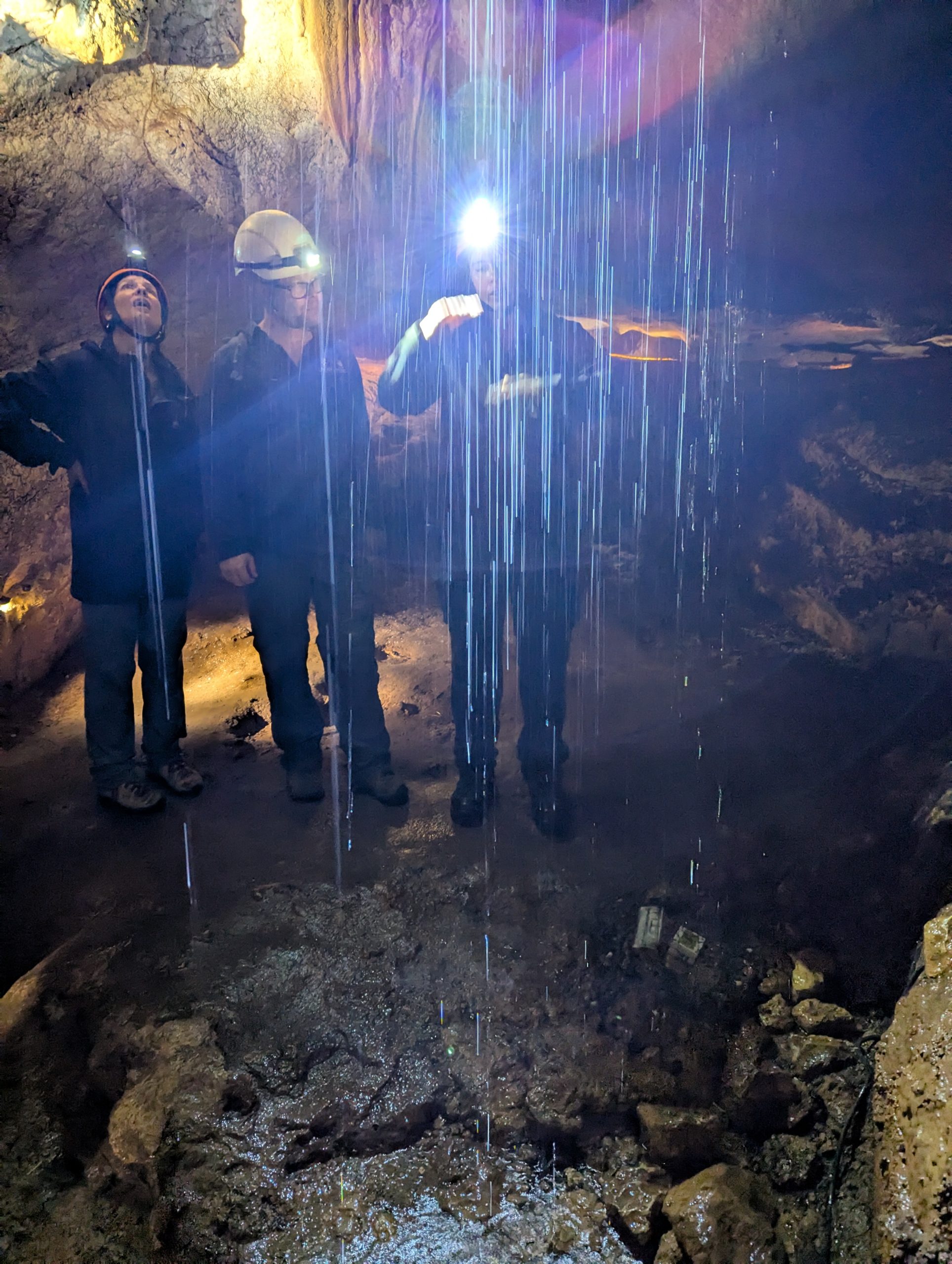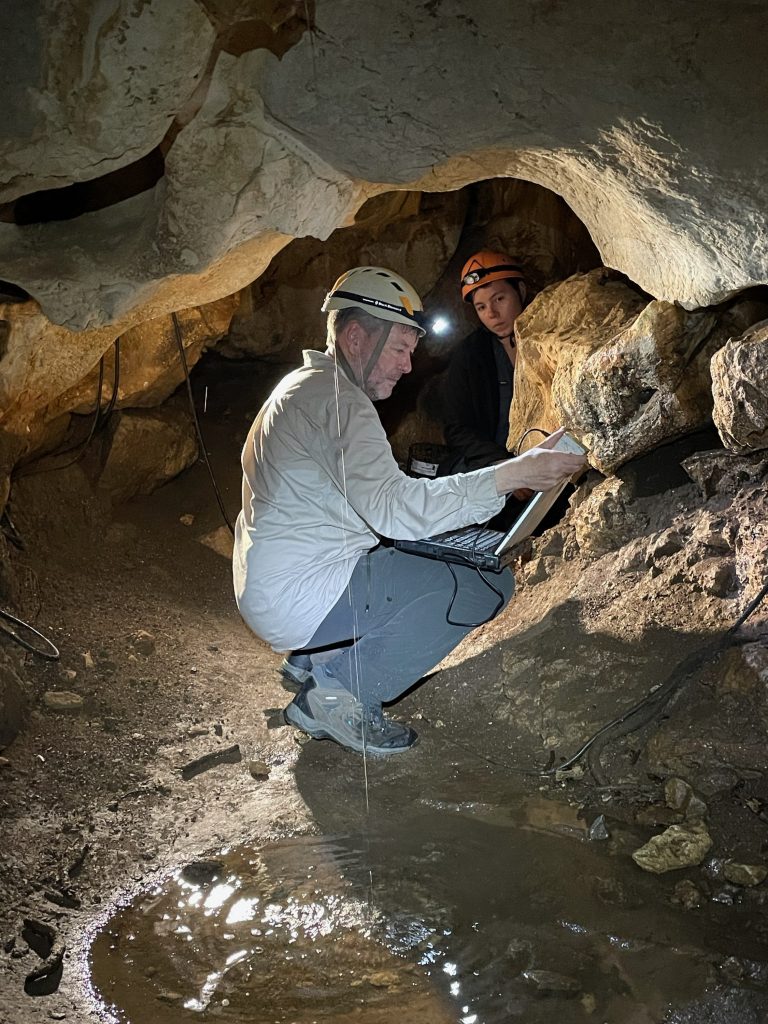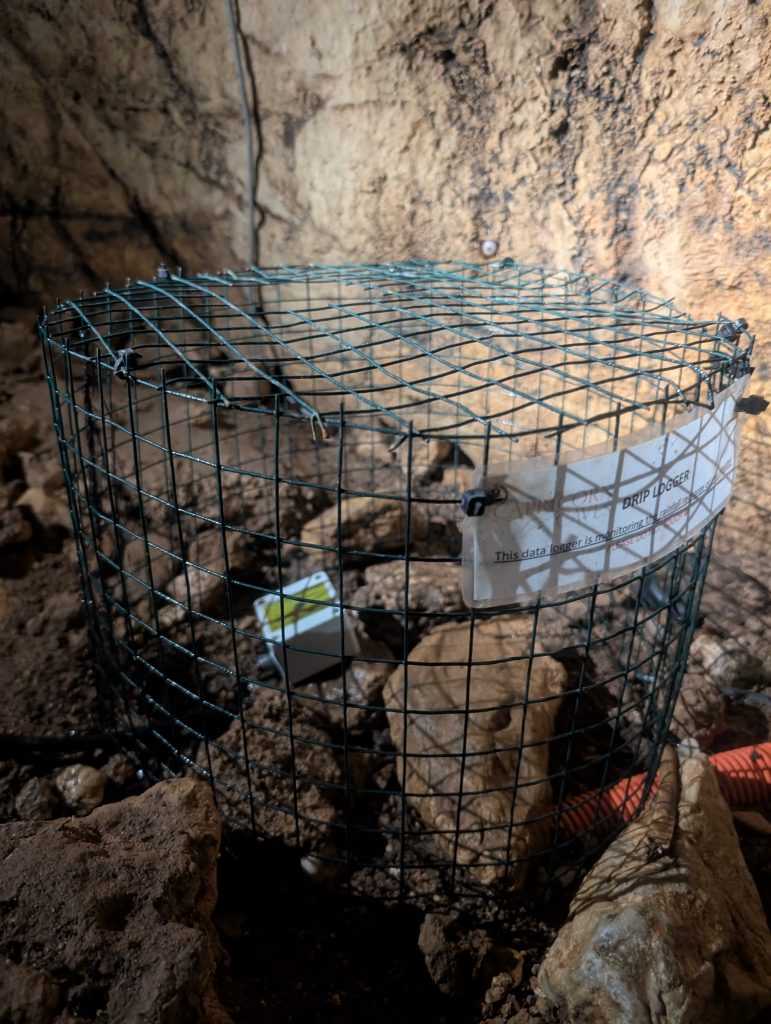
A Deeper Look: Capricorn Caves’ Role in Advancing Cave Conservation Research
Capricorn Caves is proud to support and collaborate with universities on various research projects focused on cave systems. A significant example of this is our partnership with the University of New South Wales (UNSW), which installed numerous drip loggers throughout Capricorn Caves over a year ago. This was part of a nationwide study, primarily focused on the south and east coast of Australia, designed to measure groundwater recharge events in cave systems.

Tracking Groundwater Recharge with Drip Loggers
The drip loggers are placed in areas of the cave that only “drip” during rainfall events. These logs are cross-referenced with surface rainfall records to calculate how much rain is required before recharge can occur. Since Capricorn Caves is classified as a dry, above-ground system, it was initially thought that our recharge events would differ from those of the wet, underground cave systems found elsewhere.
Findings from the Past Year’s Study
Over the Christmas 2024 holiday period, UNSW professors returned to Capricorn Caves to collaborate and reset all their loggers while sharing the findings from the past year. The results were revealing:
- 19 recharge events were recorded.
- Only 3 out of the 7 drip loggers responded to some or all rain events.
- On average, 17.9mm of rain over a 48-hour period was needed to initiate the recharge process.
- Interestingly, the cave can recharge with relatively low rainfall (just a few millimetres) if it occurs within a couple of days following a larger rain event.
- Compared to other cave sites across southern and eastern Australia, Capricorn Caves has a relatively low rainfall recharge threshold, meaning less rainfall is needed for water to reach the cave system. This is due to the large amount of bare rock above the caves, which allows rainwater to rapidly run off into fractures, rather than being absorbed by soil or evaporated. As a result, Capricorn Caves experiences the most recharge events per year among all sites in the study, despite being the most arid location.

Capricorn Caves vs Other Sites
When comparing Capricorn Caves to other sites in the project, all caves and mines in the study require a similar amount of rainfall, except for one—Daylight Cave. This site, located in the Macleay karst of New South Wales, shows unusual patterns, and the reasons for these differences remain unclear.

Understanding the Cave Climate
In addition to the drip loggers, Capricorn Caves is home to Cave Climate loggers that measure humidity and temperature. These loggers were installed after the 2018-2019 bushfires to assess how the outside climate influences the internal cave climate, particularly since the fires damaged the surrounding dry rainforest and the vegetation buffer thought to help maintain a stable microclimate inside the cave.
Delayed Effects from Outside Climate
The research also aims to determine how long it takes for the effects of the external climate to reach deeper areas of the cave, such as Cathedral Cave and Guillotine, which are far from the entrances. The data gathered will help assess whether the cave climate reflects outside climate changes in real time or if there is a delay in response. Additionally, this research plays a crucial role in understanding the significance of the dry rainforest surrounding the cave, determining whether restoration efforts are improving the cave climate, and identifying areas where the endangered Tectaria devexa fern can thrive.

Our Commitment to Scientific Research and Conservation
At Capricorn Caves, we remain committed to advancing scientific research and collaborating with universities to better understand our cave systems, their environments, and the unique species that inhabit them. Through these partnerships, we continue to contribute to the preservation and conservation of these important natural resources.
For the latest updates on our research projects and how we’re contributing to the scientific community, stay tuned to our blog.










